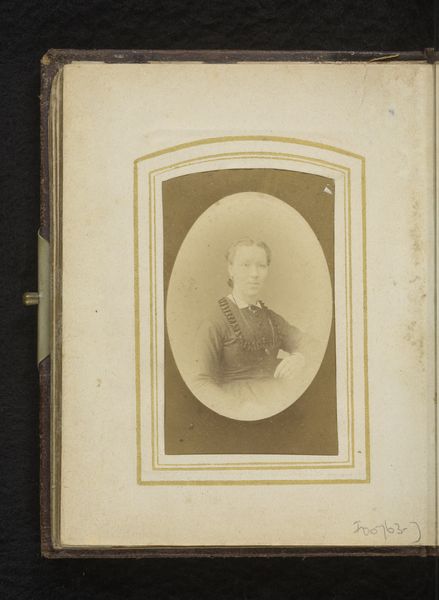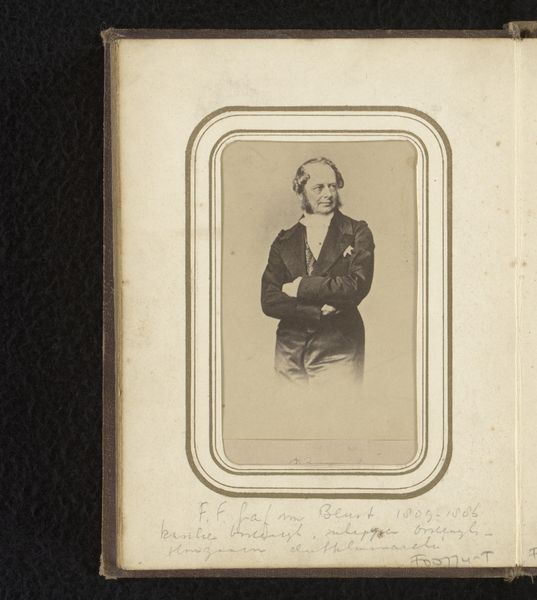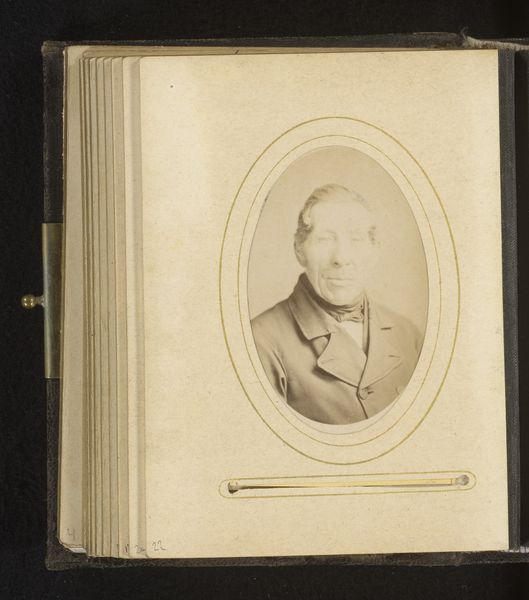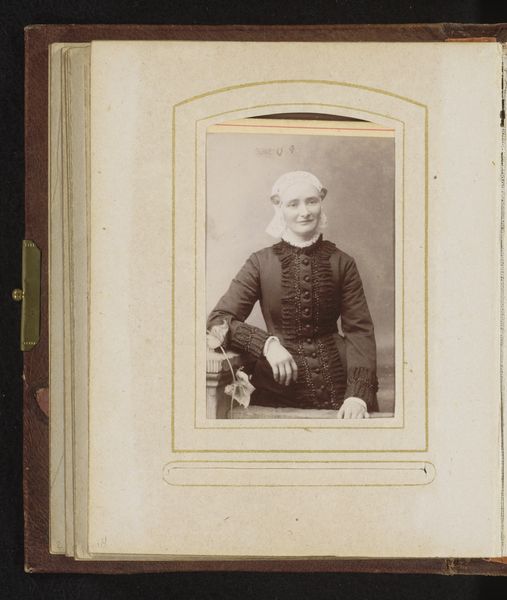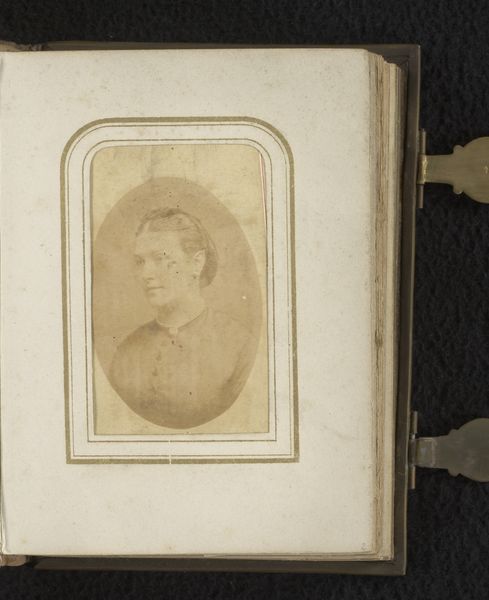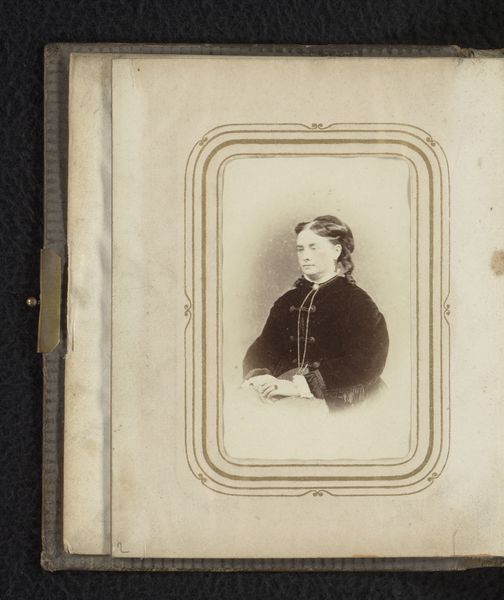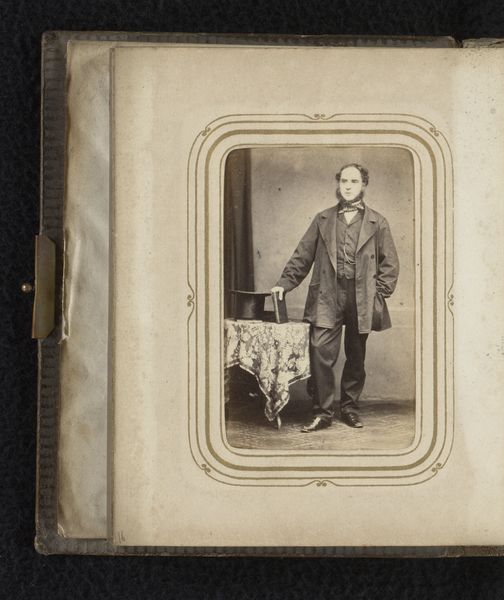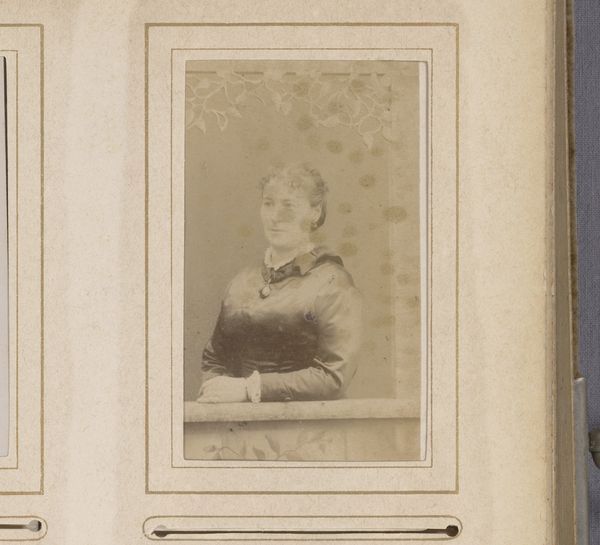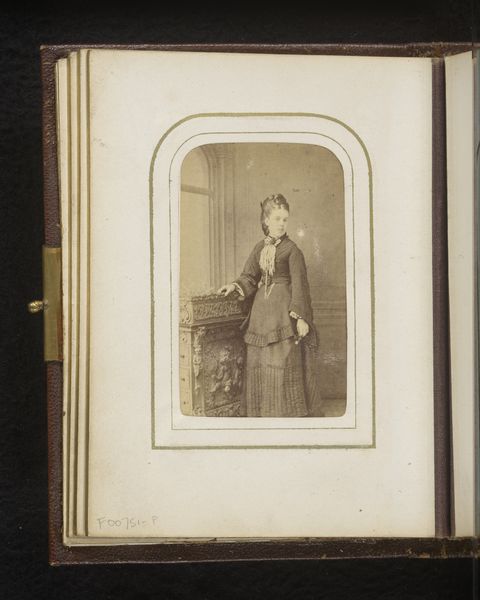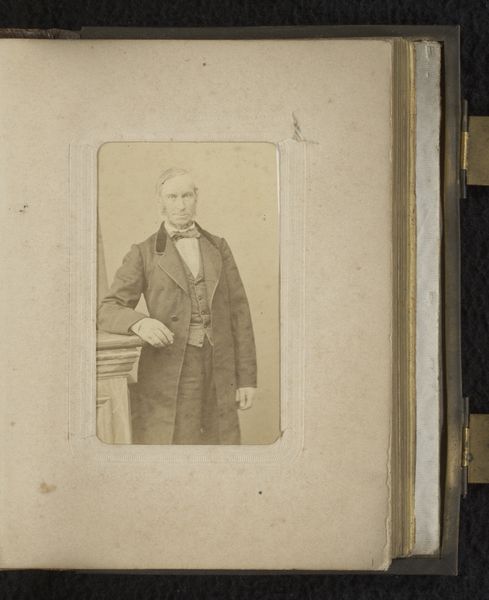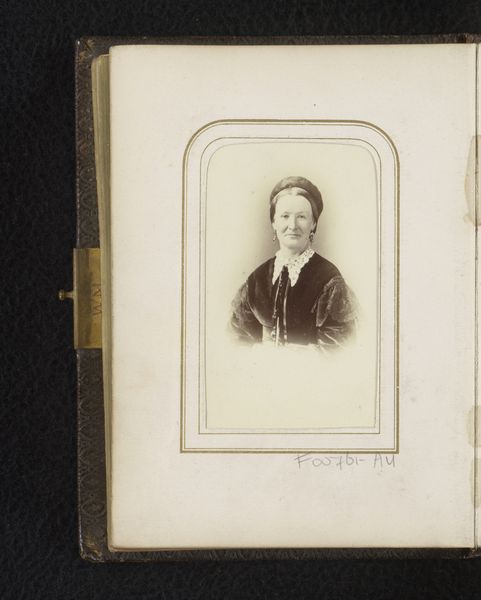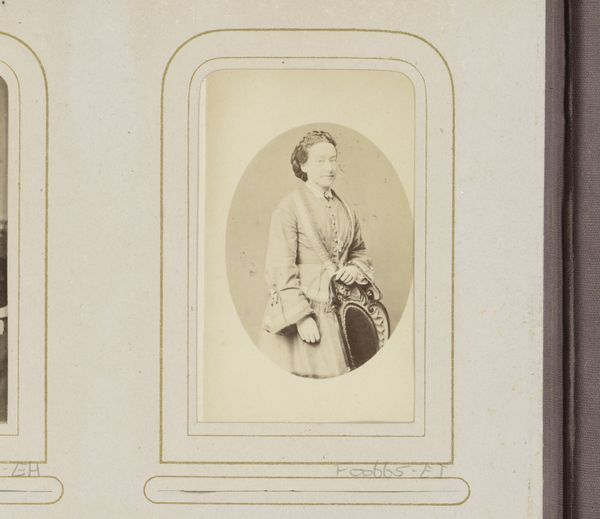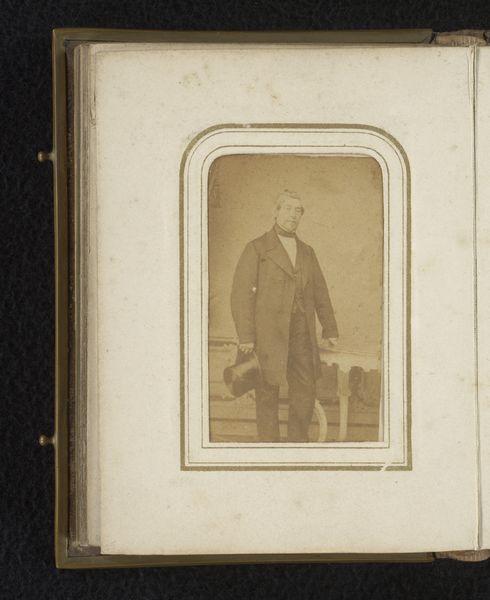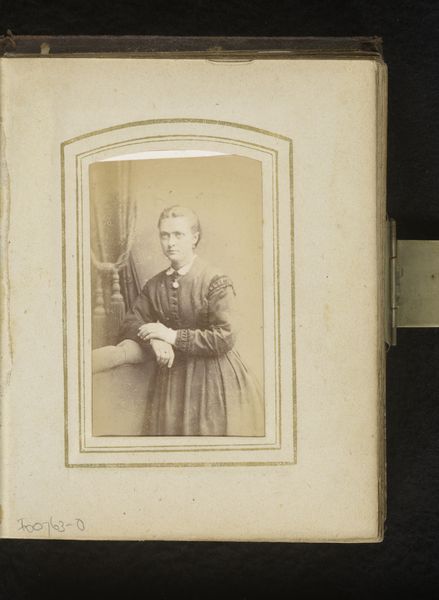
Fotoreproductie van een prent van een portret van koning Frederik Willem II van Pruisen 1850 - 1900
0:00
0:00
anonymous
Rijksmuseum
Dimensions: height 83 mm, width 52 mm
Copyright: Rijks Museum: Open Domain
Curator: Here we have an intriguing reproduction from the late 19th century, dating roughly from 1850 to 1900. It's a gelatin silver print of what appears to be a daguerreotype, depicting a portrait of King Frederick William II of Prussia. Editor: Oh, wow, it has this wistful quality about it, a hazy ghostliness. It’s like looking into a very distant, and possibly awkward, past. I immediately think of faded grandeur, you know, like peering into an attic full of old memories. Curator: That impression is understandable given the reproductive technique. The photographic process would have involved not only creating an accurate likeness, but also mediated a new accessibility to royal imagery for wider distribution. It invites us to think about how such portraits, circulated via printed photographs, shaped public perceptions of power. Editor: I imagine so. And it has such an immediate feel. I find the tonal range quite limited—mostly creams and dark browns, like sepia, even though I understand the piece is rendered in gelatin silver. The composition pushes him right up close; there’s no distracting background, it all feels quite austere, even though there's that glint of ornamentation. Curator: Exactly. The image strikes this balance between the intimate portrait and the performative aspect of royalty, reflecting both realistic features and conveying power. Moreover, by analyzing this as a reproduction of a print of a daguerreotype, we can discuss the industrial processes behind art production during the late 19th-century—mass media! Editor: I see it slightly differently. Looking at this I feel the individual more than the political figure, that sense of vulnerability. The photographer, or the daguerreotypist rather, captured something quite fleeting and delicate here. I appreciate how the light catches the side of his face. Curator: So, for you, it’s a focus on capturing that unique moment through technological mediation? Perhaps then the photographic processes here reflect not just mass production but individual, albeit replicated, engagements with power? Editor: Precisely. I leave this portrait wondering how King Frederick felt about it. What secrets did that tiny glint in his eye hold.
Comments
No comments
Be the first to comment and join the conversation on the ultimate creative platform.
